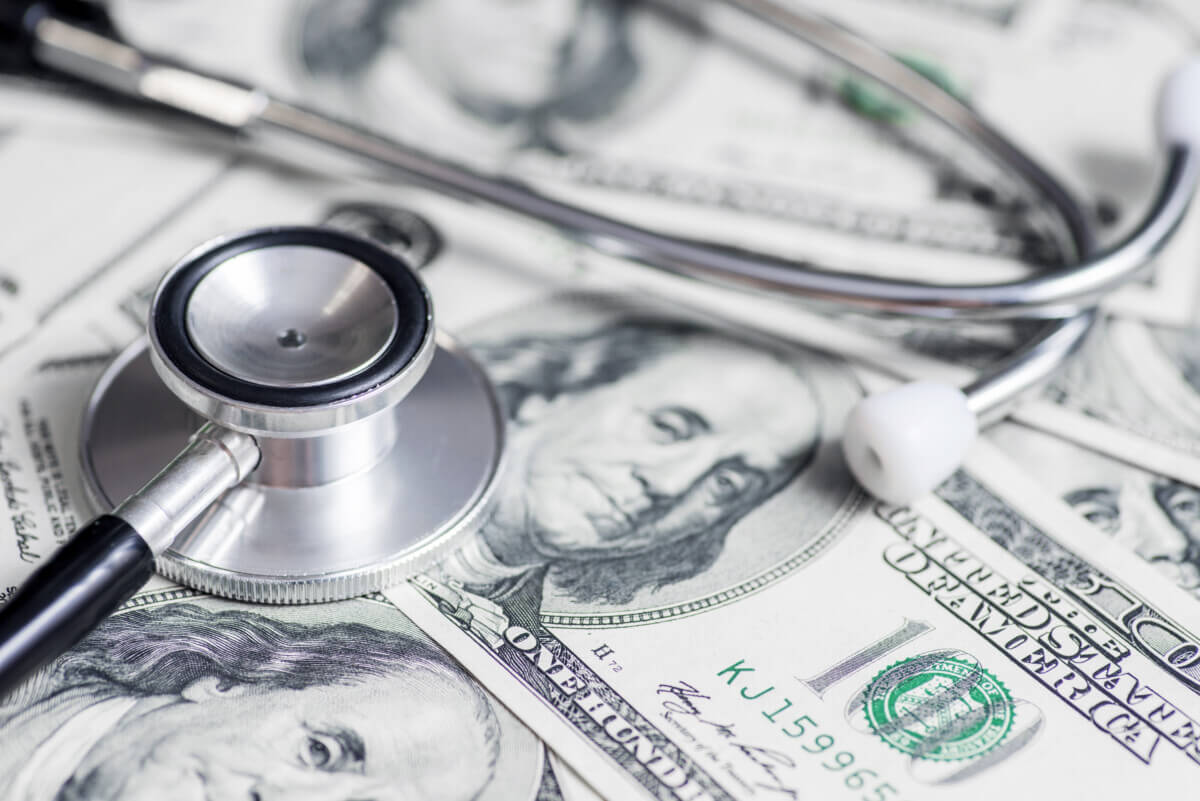
Medical debt is leading millions of Americans, many of whom are insured, to borrow money. (© spyrakot - stock.adobe.com)
By nearly every measure, America’s healthcare affordability crisis is worsening, with vulnerable populations bearing the brunt of rising costs and diminishing access.
WASHINGTON — New research reveals a troubling trend: nearly 29 million U.S. adults now report being unable to afford or access quality healthcare, marking the worst levels since researchers began tracking this data in 2021.
A survey by West Health and Gallup shows that 11% of Americans are now classified as “Cost Desperate” – unable to access quality healthcare and recently struggling to pay for needed care or medicine. This represents a 3% increase since 2021, but the national average masks far worse conditions facing specific groups.
The data shows Hispanic adults have been hit hardest, with 18% now categorized as Cost Desperate – an 8% jump since 2021. Black adults follow closely with 14% (up 5% since 2021), while White adults remain at 8%, virtually unchanged over the same period.
Families with the lowest incomes face the bleakest situation. Among households earning less than $24,000 yearly, a quarter now fall into the Cost Desperate category – an 11% increase since tracking began. This means one in four of America’s poorest citizens consistently can’t access or afford basic healthcare.
The researchers note various factors contributing to this divide, including rising medical costs, persistent drug shortages, increasing Medicaid disenrollment, and major cuts to the Children’s Health Insurance Program.

Security Continues to Erode
The survey also tracks those considered “Cost Secure” – Americans who both have access to quality, affordable care and can pay for needed treatments and medications. Only 51% of Americans now fall into this category – the lowest level recorded in the study’s history.
Hispanic adults have seen their healthcare security collapse, with only 34% now considered Cost Secure – down 17% since 2021. Black adults have experienced a 13% drop to 41%. Meanwhile, White Americans have maintained their stability at 58%.
Lower-income households have experienced similar devastating drops in healthcare security. Among those earning under $24,000 annually, only 23% qualify as Cost Secure – a 14% drop since 2021. For households in the $24,000-$48,000 range, just 30% maintain stable healthcare access and affordability (down 12% since 2021).
The remaining 38% of Americans fall into the middle “Cost Insecure” category – experiencing occasional difficulty with healthcare costs or access. Black (45%) and Hispanic (48%) adults are much more likely than White Americans (34%) to occupy this precarious middle ground.
Healthcare Access Problems Worsen
More than one-third of Americans (35%) report being unable to access quality, affordable healthcare – up 4% from 2023 and 6% since 2021.
The situation is particularly dire for lower-income households. Among those earning under $24,000 annually, 64% cannot access affordable, quality healthcare – an 11% jump in just one year. Those in the next income bracket ($24,000-$48,000) face similar challenges, with 57% reporting inability to access affordable care – a 12% increase since 2023.
Meanwhile, households earning $120,000 or more report no meaningful change in their healthcare access since 2023, widening the gap between economic classes to unprecedented levels.
Age remains a key factor in healthcare affordability. Only 4% of Americans aged 65 and above are considered Cost Desperate – up just 1% since 2021. By comparison, rates have risen 3% among those aged 50-64 (now 11%) and 4% among those younger than 50 (now 14%).
Real Human Costs
These statistics translate to real hardships for American families. Recent supplementary research from West Health and Gallup shows that 12% of adults borrowed money to pay for healthcare last year, amounting to an estimated $74 billion in medical debt nationwide.
Nearly 60% of Americans worry about going into debt from a major medical event. Many report cutting spending on necessities like food and utilities to pay for care, and others stay in unwanted jobs solely for health benefits.
The research suggests the healthcare system is increasingly divided – reliable care for those with financial resources, and an unstable patchwork system for those without. Without intervention, this healthcare divide will likely continue growing.
Survey Details
The findings come from the West Health-Gallup Healthcare Indices Study, which was conducted through web and mail surveys between November 18 and December 27, 2024. The research included 6,296 adults aged 18 and older from the Gallup Panel, forming a nationally representative sample.
West Health and Gallup developed the Healthcare Affordability Index to track trends in healthcare access and costs. The index classifies Americans into three groups: Cost Secure (have access to quality, affordable care and can pay for needed treatment), Cost Insecure (either lack access to quality care or have recently struggled to pay for care), and Cost Desperate (lack access to quality care and have recently been unable to pay for needed treatment).








Most health problems are caused by lifestyle. I am a medical anthropologist researcher and author, and I study the cultural caused of disease. While trauma care requires medical intervention, most problems resolve once you end the cause of the problem, which is usually in something we are doing to ourselves. We need educators to help people recognize this, instead of assuming they need to see a doctor. Remember that medical doctors are only one approach to healthcare, and they use drugs and surgery, and charge an arm and a leg. There are better ways to prevent and cure disease without medical intervention. These need to be explored, instead of paying high fees for medical tests and treatments. We are overmedicalized as a culture, and this is the real problem.
To go along with my first comment, what’s new. This has been coming on for quite some time and no one wants to do anything about it. These politicians need to grow a pair.
What we need is a Medicare type system for all where every person contributes except for people living below the poverty level! Even the wealthy must contribute and anyone coming to our country has to make a small contribution when coming to the country. You want to visit, a small fee is in order!
I had to have heart ablation around 2 years ago. Just the basic cost of a one hour procedure was a quarter of a million dollars. That’s insane. And there’s no guarantee it will last.
Healthcare cost is out of control. Another thing we can do is lower the prices for drugs by allowing people to purchase them from outside the country.
What’s new!